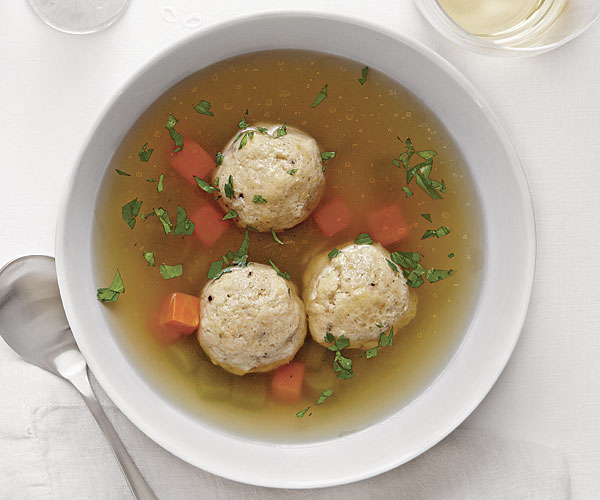 By Pam Vukelic
By Pam Vukelic
Can food heal? Can food prevent illness? Can food treat symptoms?
There is no shortage of information on the topic. A quick online search will give you a list likely to include blueberries, dark chocolate, freshly brewed tea, apple cider vinegar, red wine, and chicken soup. Yes, chicken soup.
It’s the flu season and we know to wash our hands frequently, stay home if we are sick, drink plenty of fluids, and to break out the stockpot to make a batch of chicken soup if we do get sick. Is there anything to it or is it just a placebo?
There is real scientific research on chicken soup, most notably by Dr. Stephen Rennard at the University of Nebraska Medical Center. Using 14 different soups including homemade chicken soup made from his wife’s Lithuanian grandmother’s recipe (see below) as well as canned soups such as Campbell’s and Progresso, he determined there is something to the notion that chicken soup is good treatment for cold symptoms. It is not clear how it works, but it apparently is clear that it does. It makes you feel better by calming inflammation in the body. It helps to reduce symptoms such as achiness and stuffiness.
“A variety of soup preparations were evaluated and found to be variably, but generally, able to inhibit neutrophil chemotaxis,” Dr. Rennard says. “The current study, therefore, presents evidence that chicken soup might have an anti-inflammatory activity.”
This study was done in 2000 and has been cited in thousands of articles since then. Another study, done by Mount Sinai researchers, examined the likelihood of the positive effects of eating chicken soup being the result of a placebo effect. They determined that the effect of chicken soup on the movement of mucus was something that helped people feel better. This was in contrast to volunteers who drank hot water or cold water.
Grandma’s Chicken Soup Recipe
1 5-6 pound chicken
1 pound chicken wings
3 large onions
1 large sweet potato
3 parsnips
2 turnips
12 large carrots
6 celery stalks
1 bunch parsley
salt and pepper to taste
Wash the chicken well, inside and out. Put in large stockpot, cover with cold water, and bring to a boil.
Add chicken wings, onions, sweet potato, parsnips, turnips, and carrots. Bring to a boil again, then simmer for 90 minutes. Skim foam from surface as it accumulates. Add the parsley and celery; cook 45 minutes longer. Remove the chicken (reserving the meat for some other purpose). Use an immersion blender to puree soup. Add salt and pepper to taste.
Note: Chicken soup is sometimes referred to as Jewish Penicillin so matzo balls are a logical addition. Use club soda as an ingredient and they will float in the soup. Garnish with dill.
A few additional tips:
- Remove visible fat from chicken.
- Wrap the chicken in cheesecloth before placing it in water for easy removal of the meat and bones from the hot liquid.
- Use an immersion blender to puree the finished product. There is risk associated with placing hot food in a standard blender.
- Italian parsley has a better flavor than curly leaf parsley. Reserve curly leaf parsley for garnishes.
- Don’t bother to peel the vegetables, but do wash them well, and cut into large chunks. Put on your Veggie Gloves or exfoliating gloves to scrub them.
- Use both the stalks and leaves of celery.
- The chicken can be used in a pot pie. Make a medium white sauce, stir in frozen mixed vegetables, and chicken. Place in a small oven-proof bowl. Top with a square of puff pastry and bake. You could also use it to make a pizza. Use your favorite crust (mine continues to be naan bread), top it with Alfredo sauce, chicken, and mozzarella cheese.
By the way, if you do decide to do some research on healing foods, keep the CRAAP Test in mind. Developed by California State University, Chico, five criteria are defined for use in evaluating information. Is it timely (current), does the information apply to the topic (relevancy), what is the source (authority), is it truthful and correct (accuracy), and does the information exist for the right reason (purpose)?
 Pam Vukelic is an online FACS (Family and Consumer Sciences) instructor for the Missouri River Educational Cooperative. Pam more and more appreciates foods that not only make you well, but also keep you well.
Pam Vukelic is an online FACS (Family and Consumer Sciences) instructor for the Missouri River Educational Cooperative. Pam more and more appreciates foods that not only make you well, but also keep you well.
